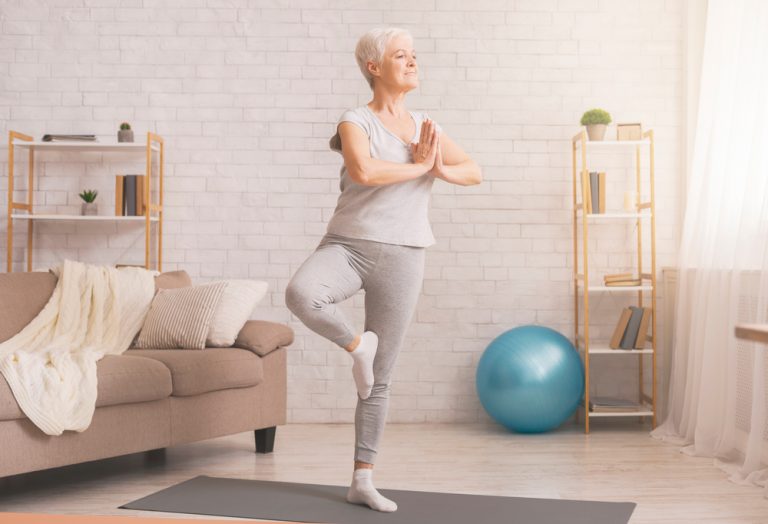
The world record for longest amount of time spent balancing on one foot is 76 hours and 40 minutes. It’s a mind-boggling accomplishment; yet, the fact that we can balance on two feet is actually also pretty incredible. Through an astonishing and unconscious process that involves your eyes, your inner ear, and sensation feedback from your joints, you’re able to stand, bend over, jump, walk and run without falling. Getting older, however, can disrupt the ability to balance, making falls more likely. Here’s a look at what causes balance issues in older adults and some steps you can take to improve balance and prevent falls.
Balance Issues in Older Adults
An estimated 25% of people age 65 and older fall every year, and 1 out of 5 of those falls causes serious injury. There are a variety of physiological changes that can contribute to poor balance and an increased likelihood of falls in older adults, including:
· Slower brain processing. A decline in cognitive health can slow the rapid process by which the brain assesses and interprets sensory information and chooses appropriate balance strategies.
· Changes in vision. Cataracts, macular degeneration, and other changes in eyesight can make it harder to judge distances or see obstacles and tripping hazards.
· Impaired vestibular function. The vestibular system, which includes the inner ear and semicircular canals, gives the brain information about spatial orientation and head position. Vertigo, ear infections, and certain medications can affect this system, causing issues with balance and stability.
· Diminished strength and mobility. Loss of muscle strength and conditions like arthritis that affect weight-bearing joints or foot pain can impact stability, making it more difficult to maintain or regain balance.
Exercise to Improve Balance
Knowing what causes balance issues in seniors can be a first step in addressing those issues. Getting your eyes and ears checked regularly, wearing non-skid shoes, and noticing if medications are affecting your balance are a few proactive ways to address balance issues and prevent falls. Getting regular exercise is another. Physical activity and balance exercises can help slow or prevent muscle loss, particularly the muscles in your legs and core, which help you remain stable when upright. Here are some exercises that can help with balance and fall prevention:
Single Leg Balance
Stand near a sturdy chair when you first begin this exercise, so you have something to hold onto if you need to steady yourself.
· Standing up, lift one foot off the ground and balance on the other foot.
· Hold the position for 30 seconds.
· Repeat with the other foot.
Tree Pose
Stand near a sturdy chair in case you need to steady yourself.
· Raise your right leg and rest the sole of your foot against your left thigh.
· If this is difficult, rest the sole of your foot against your left calf.
· Hold this position for 30 seconds or longer.
· Repeat with the opposite leg.
Tightrope Walk
It can help to have a line on the floor to follow a strip of tape, or lines made by tile or wood flooring. And make sure to position yourself near a counter, so you have support if necessary.
· Stand with one foot directly in front of the other, heel touching toe.
· Walk forward, as if on a tightrope, keeping your chin level and your eyes forward.
· Walk 20 steps forward then turn around and walk back.
Balance and Fitness Classes at Fellowship Senior Living
Now that you know what causes balance issues as we age and that exercise can be an important preventive measure against falls you may be feeling inspired to find fitness classes geared toward active older adults. If so, you’ll love our new fitness center, Vibe Fitness, opening in 2023. With state -of-the-art equipment, fitness classes for all levels, indoor pool, pickleball court and spa, we have everything you need to support balance and overall wellness. Contact us to learn more about our fitness opportunities and philosophy of wellness.




